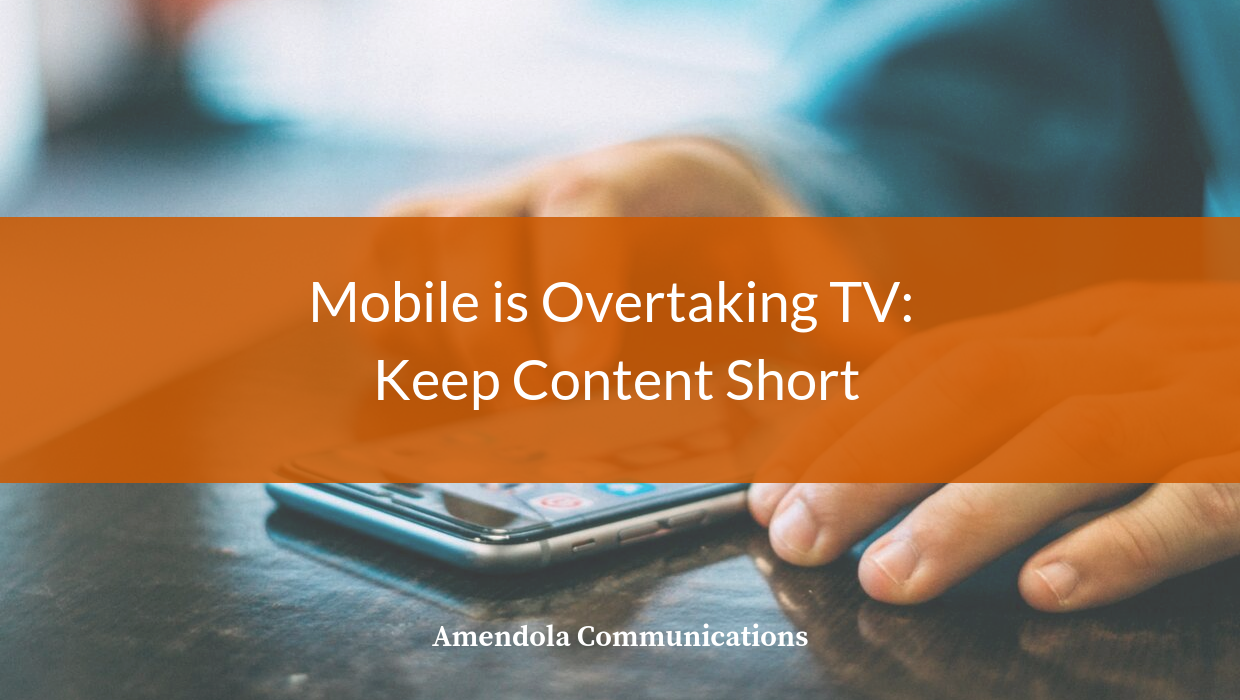According to study results that likely surprised no one, Americans now spend more time on mobile devices than watching TV. Research and analysis firm eMarketer estimates that U.S. adults will spend 3 hours, 43 minutes on mobile devices in 2019, just above the 3 hours and 35 minutes spent watching TV. Most of that mobile time, eMarketer determined, will be spent on smartphones.
It does seem that everyone is staring at their smartphone all the time. At airports, restaurants, shopping, home, even while they’re in the car(!), people can’t look away from those alluring handheld devices.
This includes everybody, too, not just the younger than 30 crowd. Eighty-one percent of the U.S. population owns a smartphone, including 53% of seniors age 65 and older. Even my 84-year-old father is enchanted with how well his Samsung Galaxy S8 takes photos of his grandchildren and can accurately transcribe his voice into text messages.
B2B healthcare marketers can take advantage of this mobile omnipresence by ensuring their written content is mobile optimized. That means marketers will need to craft written content that is mostly short, punchy and memorable while driving the reader toward action.
Write to be scanned
With the thumb always on the screen scrolling and scrolling, people don’t read on mobile the same way they do on a desktop. Users jump from one piece of content to the next and one app to the next when they receive a new notification.
That is why writing for mobile needs to top-load the most relevant and interesting points without giving away all the information too soon to keep the reader’s thumb moving all the way to the end. Likewise, due to the smaller screen, writers also need to keep the paragraphs shorter so readers don’t get lost in a long block of text on smaller screens.
The eMarketer study also found that the bulk of the time people spend on their mobile devices is on apps, not web browsers, and typically social media. Customizing content specifically for certain apps, such as LinkedIn or Facebook, is a major consideration. For Twitter, of course, marketers will need to come up with an enticing 280-character-long description of a blog post or article that will link to the content elsewhere.
Long-form for later
Although healthcare leaders typically don’t read long content pieces such as white papers or journal articles on their mobile device, long-form content is in demand.
Survey results from Forbes/Deloitte found that “feature articles and reports” were the most preferred format for business insights among C-level executives. Google, meanwhile, a few years ago reported that 80% of hospital administrators reach out to vendors for more information, including 45% who are researching vendors on their mobile devices.
Through a piece of shorter, scannable mobile content, marketers can improve their chances for further engagement by inviting the healthcare decision-maker to download or have a white paper or eBook emailed to them.
Speaking of eBooks, which are typically a longer-form of content, they can be ideal for mobile device consumption. With fewer words, more graphics and callout boxes that can be easily viewed on a smartphone, marketers can create an attractive, mobile-optimized eBook that is readable during a lunch hour, waiting in an airport or in a rideshare.
Tap into video
Short videos are an ideal content delivery format for mobile devices. If healthcare executives are like their colleagues in other industries, 59% would rather watch a video than read text. Here again, though, at the end of the video, marketers can invite the viewer to learn more by downloading a mobile-friendly eBook, have a white paper emailed to them, or even request a demo. As with written content, however, videos must be short 3 minutes maximum.
If you can’t effectively communicate your message and value proposition to potential customers in 3 minutes, then please give Amendola Communications a call so we can help streamline your messaging and boost its impact. To learn more about’ our strategic counsel, PR or other integrated communications and marketing services, take a look at some of our case studies here.” (See what I did there?)
